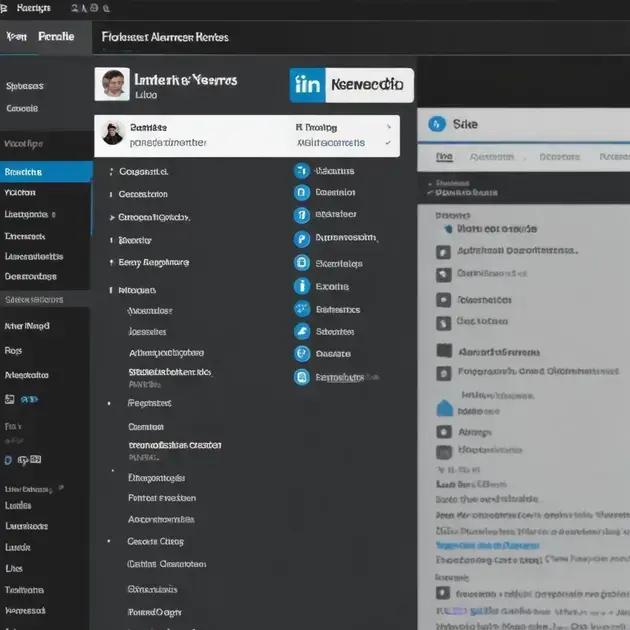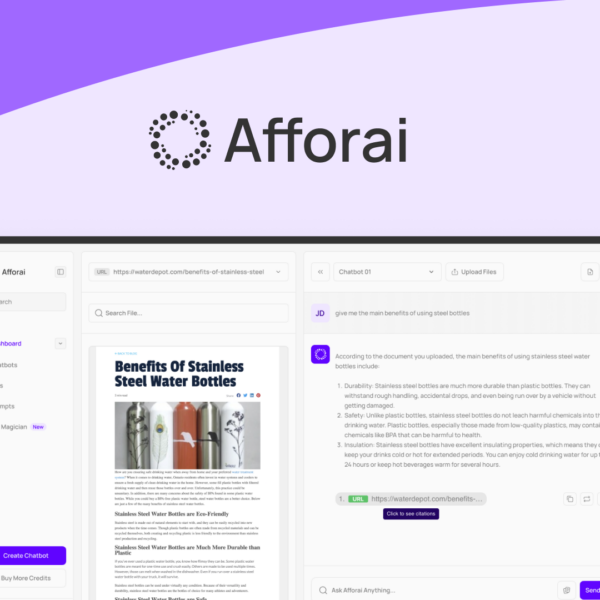In today’s competitive job market, having a strong LinkedIn profile is essential for freelancers and job seekers alike. While elements like profile pictures and headlines are important, there’s much more beneath the surface that can enhance your recruitment game. Understanding what recruiters truly value and how to present yourself effectively can set you apart from the crowd. By embracing these insights, you can maximize your LinkedIn presence and attract potential employers or clients rather than just relying on basic elements. Ready to boost your profile? Let’s dive into some key strategies!
What Recruiters Really Look For on LinkedIn
Understanding what recruiters want is key to standing out on LinkedIn. Recruiters often spend mere seconds reviewing profiles, so it’s essential to grab their attention quickly. Here are some key areas they focus on:
1. Strong Profile Picture
Your profile picture is the first thing recruiters see. Choose a professional-looking photo where you’re dressed appropriately for your industry. A warm smile and good lighting can make a big difference.
2. Compelling Headline
Your LinkedIn headline should showcase your expertise and help you stand out. Avoid generic terms; instead, consider phrases that describe your skills or the value you offer. For example, use “Digital Marketing Specialist | Helping Brands Grow Online” instead of just “Marketing Professional”.
3. Well-Written Summary
The summary section is your chance to tell your story. Write in the first person, and share your experiences, skills, and career aspirations. Make it engaging and relatable. Highlight key achievements that demonstrate your capabilities.
4. Skills and Endorsements
List relevant skills that align with your career goals. Aim for at least 5-10 skills in your profile. Encourage colleagues and connections to endorse these skills, as this adds credibility.
5. Recommendations
Having recommendations from colleagues or supervisors can help you stand out. Aim to gather testimonials that speak to your strengths and contributions. These add a personal touch and enhance your profile’s trustworthiness.
6. Engagement and Networking
Recruiters look for active profiles. Engage with posts, comment on industry-related topics, and share informative content. This activity shows your interest in your field and helps expand your network.
By focusing on these key areas, you can significantly enhance your LinkedIn profile’s appeal to recruiters.
The Importance of Keywords in Your Profile

Keywords are vital for making your LinkedIn profile stand out. They help recruiters find you during searches. Using the right keywords can increase your visibility and show your expertise. Here are essential aspects of using keywords effectively:
1. Identify Relevant Keywords
Research common terms and phrases used in your industry. Look at job postings similar to your career goals and take note of frequently mentioned keywords. These terms should relate directly to your skills and experiences.
2. Integrate Keywords Throughout Your Profile
Once you have identified relevant keywords, place them strategically in your profile:
- Headline: Include the main keywords that define your role or expertise.
- Summary: Use keywords naturally in your summary to highlight your qualifications and career goals.
- Experience Section: Add keywords in your job descriptions to showcase your capabilities and achievements.
- Skills Section: List skills using keywords to ensure they are searchable and relevant.
3. Balance is Key
While it’s important to use keywords, overstuffing your profile can seem unnatural. Aim for a balance between keyword usage and readability. Keep sentences clear and ensure your profile tells your story.
4. Update Regularly
As industries evolve, so may the keywords that are important. Regularly update your profile to incorporate new terms that reflect changes in your career or developments in your field. This keeps your profile fresh and relevant.
5. Monitor Your Profile’s Performance
Use LinkedIn’s analytics tools to monitor how often you’re found in searches. If you’re not appearing as often as you’d like, reconsider your keyword strategy.
By focusing on keywords, you can enhance your LinkedIn profile, making it a powerful tool for attracting opportunities.
How to Optimize Your LinkedIn Headline
Your LinkedIn headline is one of the first things people notice. A strong headline can grab attention and make a lasting impression. Here are key strategies to optimize your LinkedIn headline effectively:
1. Use Keywords
Incorporate relevant keywords that describe your profession or skills. This helps improve your visibility in search results. For example, if you are a software developer, use keywords related to your technical skills.
2. Highlight Your Value
Instead of just stating your job title, convey what value you bring to employers. For instance, change “Marketing Manager” to “Marketing Manager | Increasing Brand Visibility and Engagement”. This shows potential employers what you can do for them.
3. Include Numbers and Metrics
If applicable, use numbers to quantify your achievements. For example, “Sales Executive | Achieved 150% of Sales Target in 2022” provides a clear idea of your success and expertise.
4. Keep It Short and Simple
A headline should be concise. Aim for around 120 characters. Avoid jargon and buzzwords that might confuse readers. Choose straightforward language that clearly defines your role.
5. Update Regularly
Your goals may change over time. Keep your headline updated to reflect your current career objectives or achievements. Regular updates ensure your profile stays relevant and engaging.
6. Use a Call to Action
Phrasing your headline can provoke interest. Consider using action words like “Driving” or “Transforming” to inspire curiosity. For example, “Driving Innovative Solutions in Digital Marketing”.
By following these tips, you can create an impactful LinkedIn headline that stands out and effectively represents your professional brand.
The Role of Engagement in Getting Noticed

Engagement is key when it comes to standing out on LinkedIn. Building connections and interacting with others can significantly improve your visibility and opportunities. Here’s how to effectively engage on the platform:
1. Like and Comment on Posts
Regularly like and comment on posts from your connections and industry leaders. This not only shows support but also increases the chances of your profile being seen by others. Engaging in meaningful conversations can highlight your knowledge and perspective.
2. Share Relevant Content
Sharing articles, insights, and updates related to your field can position you as a knowledgeable resource. Aim to share content that sparks discussion or offers valuable information. You can share industry news, personal achievements, or helpful tips.
3. Post Original Content
Creating your own posts can significantly increase engagement. Consider writing about your experiences, lessons learned, or insights about industry trends. Use images, videos, or infographics to make your posts more appealing.
4. Participate in LinkedIn Groups
Join LinkedIn groups related to your industry to connect with like-minded professionals. Actively participate in discussions and share your expertise. This not only increases your visibility but also helps build a network of meaningful connections.
5. Network with Personal Notes
When sending connection requests, always include a personal note. Mention why you want to connect or how you know them. A personalized message can lead to a higher acceptance rate and show your genuine interest in connecting.
6. Ask for Feedback and Input
If you share content or seek advice, invite comments and questions. This creates a two-way conversation that encourages more people to engage with you. Asking for feedback on posts can generate interaction and help you understand your audience better.
By focusing on engagement, you create opportunities to connect with others and gain exposure in your industry. Active participation on LinkedIn can lead to new opportunities, collaborations, and career advancements.
Making the Most of LinkedIn Networking Opportunities
Making the most of LinkedIn networking opportunities is crucial for career growth. Effectively using LinkedIn can lead to valuable connections and open doors to new possibilities. Here are some strategies to maximize your networking efforts:
1. Optimize Your Profile
Before reaching out to others, ensure your profile is complete and professional. Include a clear photo, detailed work experience, and relevant skills. This makes a strong impression and encourages others to connect.
2. Personalize Connection Requests
Always send personalized messages when requesting connections. Mention how you found them or why you want to connect. A thoughtful note can increase the chances of your request being accepted.
3. Attend Virtual Events
LinkedIn often hosts virtual events like webinars and workshops. Attend these events to meet industry leaders and peers. Participating actively can lead to connections and enhance your knowledge.
4. Follow Industry Influencers
Identify and follow key influencers in your field. Engage with their posts by liking, commenting, and sharing insights. This can help you get noticed and may lead to opportunities for collaboration.
5. Join Relevant Groups
Participate in LinkedIn groups that align with your professional interests. Share insights, ask questions, and discuss topics with other members. Active participation can establish you as a knowledgeable voice in your field.
6. Utilize LinkedIn Messaging
Don’t be afraid to reach out to connections via LinkedIn messaging. If you have a question or need advice, a direct message can foster a dialogue. Be respectful of their time and keep messages concise.
7. Offer Help and Support
Networking is a two-way street. Be willing to offer your assistance or share resources with others. This can strengthen relationships and may lead to reciprocal support in the future.
8. Regular Follow-Ups
Maintain your connections by following up regularly. A simple check-in or sharing relevant content can keep the relationship alive and show that you value their connection.
By actively utilizing these strategies, you can enhance your LinkedIn networking experience and create meaningful professional relationships.




